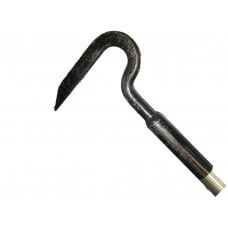The Hows and Whys of Fire Hooks: The Most Utilized Tool in the Fire Fighting Arsenal
Today, we're diving into the world of fire hooks, arguably one of the most essential tools in a firefighter's arsenal. If you're in the market for a new fire hook, you might find yourself overwhelmed by the sheer number of options available. Choosing the right fire hook is crucial because, in emergency situations, lives often depend on the reliability of your equipment. That’s why we’re here to help you understand the ins and outs of fire hooks—what makes them unique, how they differ, and what features you should consider when selecting one. Small-Size Valve Balls,Stainless Steel Hollow Valve Balls,Steel Hollow Valve Balls,Stainless Steel Hollow Valve Spheres WENZHOU ZHENHONG VALVE BALL CO., LTD , https://www.zhvalveball.com
What Exactly Is a Fire Hook and How Does It Work?
A fire hook, also known as a pike pole, is an indispensable tool for firefighters and rescue teams. It serves multiple purposes, acting as both a prying and probing tool. Whether it’s uncovering hidden fires in buildings, trash heaps, or brush, or breaking through walls, ceilings, or floors, the fire hook proves invaluable. Its versatility shines through when creating ventilation or clearing debris after a blaze. Additionally, it’s perfect for breaking up creosote buildup in chimneys following a fire. Fire hooks come in various specialized forms, including drywall hooks, pike poles, roof hooks, salvage kits, and trash hooks. At Fire End, we carry a wide range of these tools to ensure you have everything you need for your firefighting toolkit.
Types of Fire Hooks and Their Distinctions
Fire hooks have evolved over time, adapting to regional needs and specific firefighting scenarios. Different cities and environments demand different types of hooks depending on factors like the type of fuel burning, the size of the structure, and the materials involved. For instance, structural fires require one set of tools, while brush or forest fires necessitate entirely different ones. Vehicle fires also call for specialized hooks and pry bars tailored to their unique challenges.
Breaking Down Fire Hook Components and Functions
A typical fire hook consists of a pole and a tool on each end. These tools can include handles, ram knobs, prying tools, rakes, chisels, sounding balls, or points. As the name suggests, fire hooks usually feature a hook or claw on at least one end, which is primarily used for tearing, moving, or grabbing materials. Historically, these tools were made from materials like steel, iron, and fiberglass, but newer designs now prioritize lightweight construction and ergonomic design for better usability. Let’s explore the various functions of each tool end to help you decide which suits your needs best. For more insights into tool requirements based on geographic locations, check out our related article here.
Fire Hooks Explained
As previously noted, every fire hook includes a hook or claw on at least one end, serving purposes such as tearing, moving, or grabbing materials. These hooks are typically forged from iron or steel. Below are seven of the most commonly used fire hook types:
Now, let’s examine the other end of the fire hook tool.
Secondary Fire Hook Tools
On the opposite end of the fire hook, you’ll often find additional tools that complement its primary function. These tools can vary depending on the specific hook and its intended use. Some are fixed to certain hooks, while others allow for customization based on your needs. Here are four of the most common secondary tools:
Fire Hook Poles
The poles of fire hooks are crafted from diverse materials, such as fiberglass, ash core, steel, and stainless steel, depending on the intended use. They come in lengths ranging from 4 to 12 feet. You can opt for shorter poles with the possibility of adding extenders later, enhancing their versatility. Shorter poles with extenders are particularly practical for scenarios requiring quick adjustments.
Our Trusted Suppliers
At Fire End, we partner exclusively with trusted suppliers to ensure you receive the highest quality products consistently. Explore our extensive collection of fire hooks, all supplied by Fire Hooks Unlimited.
Ordering Your Fire Hook
If you’re unsure which fire hook to purchase, don’t hesitate to reach out! Call us at 1(914)592-3640 or contact us directly. We’re here to help you find the perfect tool within your needs and budget.
In conclusion, understanding the nuances of fire hooks can significantly enhance your firefighting capabilities. Whether you’re a seasoned professional or a newcomer to the field, equipping yourself with the right tools is paramount. Stay safe and informed!